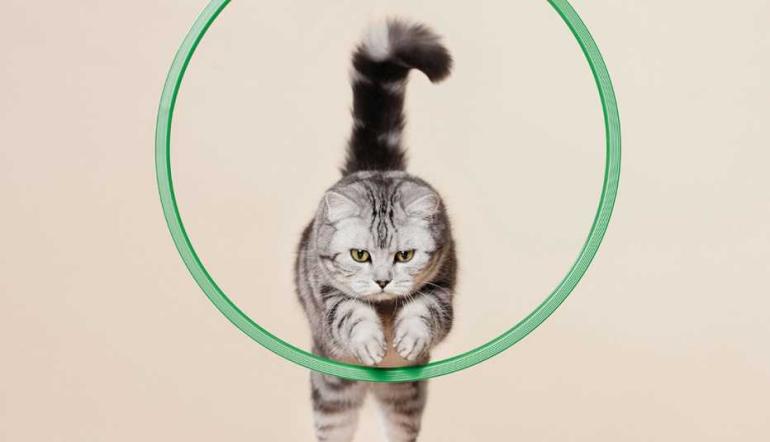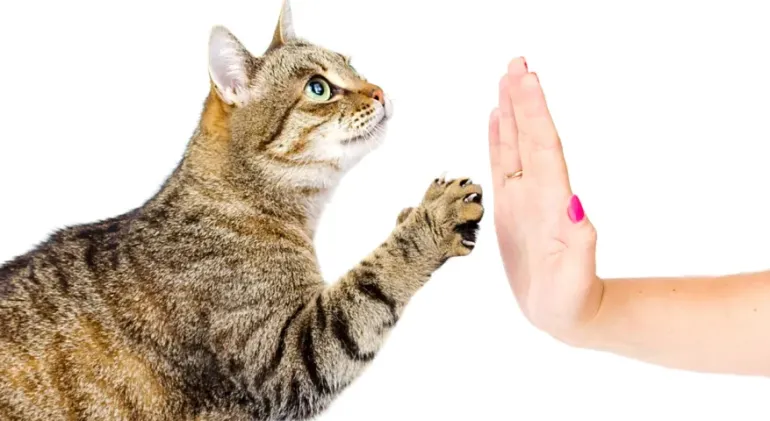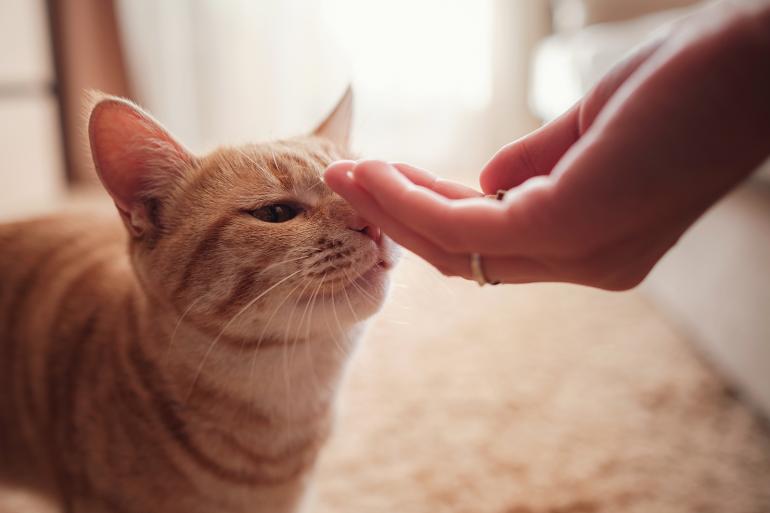Cat Training: Building a Strong Bond Through Positive Reinforcement

Training a cat may seem like a daunting task, as cats are often seen as independent and less eager to please than dogs. However, with the right approach and understanding of feline behavior, you can successfully teach your cat various commands and behaviors. In this article, we'll explore the benefits of cat training, effective training techniques, and some essential commands to get started.
Training your cat
Every year, thousands of cats are given up by their owners. This is usually because they do things that the owners don't like, like scratching the furniture, getting into places they shouldn't (like the baby's cot), and scratching and/or biting them. Simple training with your cat could help stop these kinds of problems and make your bond with your cat better. Many people thought for a long time that cats couldn't be trained, but they can learn just like dogs.

The Benefits of Cat Training
-
Improved Communication: Training helps establish a common language between you and your cat, enhancing your bond and mutual understanding.
-
Enrichment and Mental Stimulation: Training provides mental challenges, keeping your cat mentally engaged and preventing boredom.
-
Behavioral Modification: Training can help address undesirable behaviors, such as scratching furniture or aggression.
-
Safety: Trained cats are more likely to respond to commands, which can be crucial in emergency situations.
What is the best type of training for a cat?
Good things happen when you train your cat, just like they do with other animals. This means you should reward your cat when it does something you like and ignore it when it does something you don't want it to do. The cat will learn that doing what you want it to do leads to a good feeling, which will make it more likely to do it again. The cat is less likely to do something it shouldn't if it doesn't get something good out of it. To make our cat behave the way we want it to, we do things like this.
Effective Training Techniques
-
Positive Reinforcement:
- Reward-based training is the most effective approach for cats. Use treats, praise, and affection to reinforce desired behaviors.
-
Patience and Consistency:
- Cats learn at their own pace. Be patient, and consistently reinforce desired behaviors.
-
Short, Frequent Sessions:
- Keep training sessions brief (around 5-10 minutes) to maintain your cat's interest and prevent frustration.
-
Choose the Right Environment:
- Minimize distractions and select a quiet, familiar space for training sessions.
-
Use Clear Commands:
- Use short, distinct commands that your cat can easily understand, like "sit," "stay," or "come."

Where should I start?
To begin, teach your cat a very basic command, like "sit." Move one of your cat's favorite treats over their head. As their eyes follow the food and their head moves back, their back end will easily drop into a sitting position. Now, give your cat the food while it's sitting down. Move around so the cat follows you and gets up from sitting down, and then try again. Often, we need to encourage behavior that is close to what we want (i.e., behavior that is taking baby steps toward what we want). When the cat doesn't sit on the first try, help it learn the right thing to do by rewarding it when it drops its back end. Once the cat always sits when you offer food as a reward, you can start saying "sit" right when the cat is sitting. Then it will start to connect the action with the word "sit."
Essential Commands to Teach Your Cat
-
Sit:
- Hold a treat above your cat's head, moving it back towards their tail. This should naturally cause them to sit down.
-
Stay:
- After your cat has mastered "sit," introduce the "stay" command. Hold your hand out in a "stop" gesture and say "stay."
-
Come:
- Encourage your cat to come to you by calling their name followed by "come." Reward them when they approach.
-
Leave It:
- This command can be crucial for preventing your cat from getting into something they shouldn't. Offer a treat, say "leave it," and cover the treat with your hand.
-
No:
- While it's not a command per se, teaching your cat to respond to a firm "no" is important for their safety. Use this command sparingly and consistently.
What should I use as a reward for my cat?
Every cat is different and each will prefer different activities and it can be a fun task finding out what your cat likes best. Consider whether your cat is motivated by food? Does he or she like any special treats such as special cat biscuits, prawns, small pieces of ham for example? If he or she is not very food motivated, does he/she has a favourite toy or game, for example, do they like to play with you with a fishing rod toy? Or do they like to be groomed? Carrying out your training sessions when your cat is hungry or motivated to play or be groomed will help successful training by keeping the value of your reward high. Using a variety of rewards can also help.
What other things could I teach my cat?
It can be helpful to teach your cat how to use a target. This means you need to teach your cat how to sit, stay, or put its paw or nose on a certain spot or thing. Slowly extend the time your cat spends on the goal before giving it a treat. You can teach your cat not to jump on counters (by having it sit on a target mat on the floor instead) or to get into the cat carrier (by putting the mat inside the carrier). There are lots of fun things you can teach your cat. This will keep your cat's mind and body active, which is especially important for cats that only live inside and live in a more static setting. Some examples of these kinds of training jobs are "fetch," "paw," "beg," and even getting around on small agility courses that you set up at home.
My cat is already adult, is it too late to start training?
It is never too late to start teaching your cat. Kittens and younger cats may learn some things faster than older cats. It is important to remember that workouts should be short, starting with no more than a few minutes and working up to no more than 10 to 15 minutes. Kittens and adult cats tend to have shorter attention spans, and each cat will be able to handle training for a different amount of time. Remember the most important thing: always end training on a good note, while your cat is still interested. Don't tire them out. Get in shape every day and have as much fun as you can while doing it.

How do I know if my cat is enjoying the training?
No force is used during positive reinforcement training, therefore your cat is free to walk away from the training at any point. If your cat does abandon the session, the treat you are offering may not be appealing enough or your training session may be too long. Try changing the treat to something of higher value (eg tuna, prawns, ham, more active toy) and remember to keep your sessions short. A cat that is actively engaged in training may vocalize in a positive manner for the reinforcer (purr or miaow), will exhibit relaxed body language and will orientate its gaze towards you.
Encourage Play and Exploration
Interactive playtime with toys like feather wands or puzzle feeders can be an excellent way to reinforce training and provide mental stimulation.
Training your cat is not only a practical way to ensure their safety and good behavior, but it's also a wonderful opportunity to strengthen your bond and provide mental enrichment. Remember, each cat is unique, so tailor your training approach to their individual personality and preferences. With patience, consistency, and positive reinforcement, you'll be amazed at what your feline companion can learn!





